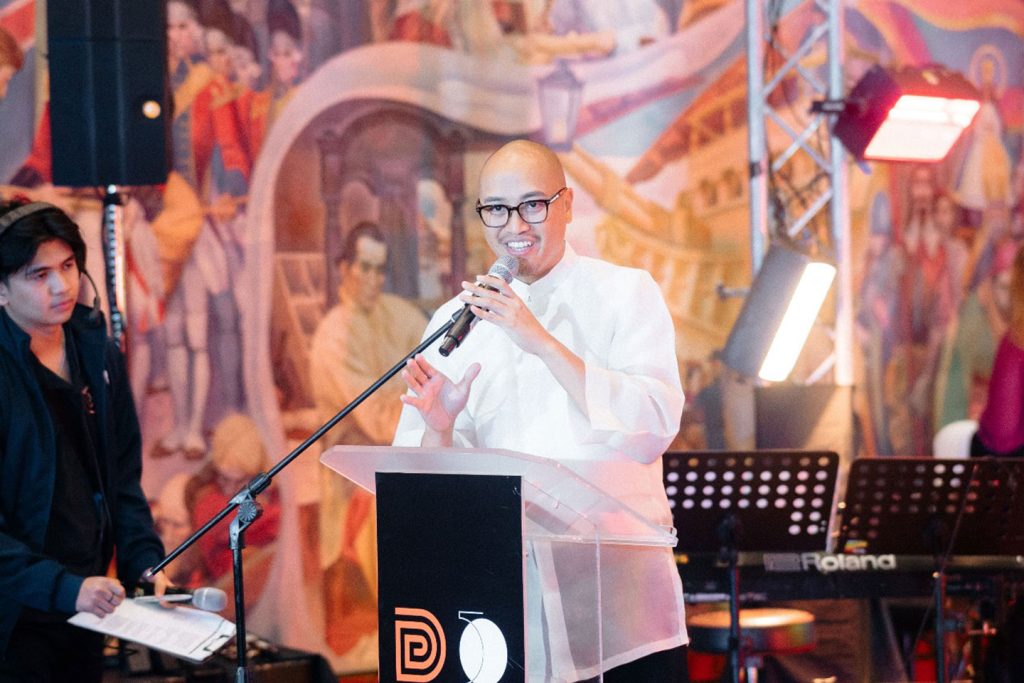MANILA, PHILIPPINES — In line with the Design Center of the Philippines’ (Design Center) 50th year this 2023, the 50 Years of Philippine Design and Beyond exhibit provides a historical look on the significance of design to economy, industry, and society throughout the years. Organized and produced by the Design Center, an attached agency to the Department of Trade and Industry, the exhibit is open to the public with free admission from December 12, 2023 to March 03, 2024 at the National Museum of Fine Arts.
At the press preview for the exhibition, key contributors of the project shared the value of this showcase to Philippine creativity, citing the transformative power of design and the unique quality it brings to global discussions such as sustainability, the circular economy, and so many more issues at large. Three key themes were discussed: how design provides solutions to global concerns, contributes to a deeper understanding of our national identity, and how it forges the necessary tools to drive the country forwards and beyond.
Solutions
Exhibition curator Marian Pastor Roces, who personally gave a tour of the exhibit to the press, emphasized this sentiment by providing a quick art history lesson. She stated that the 50-year mark dates back to the first times that designers started working with market analysts to heed to the calling of the times, propelling Filipino design to new heights in international markets and industry competitions.






“From the early ‘70s to today, there have been incredible leaps in the understanding of that relationship between creativity and markets. You don’t necessarily simply respond to the markets; you can also educate the markets,” she started.
“We do not separate markets and creativity. Our story is not this. The creative genius in design is marrying these two spaces,” she furthered. “This is exactly 50 years since Filipino design went global — that is self evident when you tour the exhibition. This was the same half-century when technological change allowed designers to do things they couldn’t do before.”
As Marian put it, the practice of incorporating design thinking in problem solving has always been present among Filipinos, even before institutions recognized it as such. However, the challenge and ambition of today is to open more seats at the table for design leaders to join in on bigger conversations beyond markets, industry and commodities, and apply the principles of design thinking in these areas. This is among the main goals of the retrospective exhibition.
National identity
Jorell Legaspi, Deputy Director-General for Museums at National Museum, on the other hand, reflected on the importance of design in weaving, visualizing and memorializing the Philippine national identity.

“Design is not only about aesthetics. In understanding this, we gain insights on the nuances that make our cultural [identity]. Thus it is truly essential to take a step back and visualize our history and global footprint through the lens of good design,” he stated.
True enough, the exhibition, as much as it puts the spotlight on how Filipino creatives have provided ingenious answers to challenges of the times, primarily provides a snapshot of what Philippine society and culture looked like in each era. From iconic toy concepts to revolutions in fashion, new ways of printing film posters to images of resistance during some of the country’s most tumultuous times, each work presented in 50 Years of Philippine Design and Beyond effectively transports viewers back in time, and captures what the Philippines stands for, and has stood for, for the past half-century.
“It is crucial for us Filipinos to reflect on the impact of design on our national identity. As we embark on this visual journey, let us not only celebrate the achievements of Filipino design and identity, but as well as propelling Filipino creative thinking and craftsmanship,” Jorell underlined.
Beyond
The key word that really fuels the whole spirit of the exhibit is looking “beyond,” and what it means in the context of Philippine design. In this case, it uses solutions-based thinking and identity-forging to fabricate the tools Filipinos need to successfully head towards the future, and whatever it may entail.


Speaking on this, Rhea Matute, Executive Director of the Design Center of the Philippines, highlighted that the exhibit hopes to inspire and educate younger creatives on the country’s design history, and spark new ideas from foundational concepts: “It’s very exciting for our young generation of designers to connect with the icons of PH design. It’s really about understanding why we exist — not simply to create products for manufacturer; but really to set a bar of design excellence, and that was really put forward when the agency was founded 50 years ago.”
Furthermore, Marian Pastor Roces strengthened this notion of retrospection as a means to forge ahead by stressing “beyond” as a point of emphasis: “We’re looking backwards, but not to be nostalgic or to celebrate how great we are. But we need to look back in order to see what’s going on for us in the future, and how we can project into the future. It’s not to pat ourselves in the back that we survived. but it shows that we’re ready for the changes of today and tomorrow.”
Notably, the exhibit’s last stop is a look into the future, with nods to the circular economy, systems design, and more. “Not just because they’re the buzz words of today, but their time has come after being in the vocabulary of designs for several years,” Marian noted.
Wrapping up the discussion, Marian shared her hopes for the future of Philippine design, illustrated by the exhibit: “I think the next decades will be very challenging. I want design to be part of the thinking of how we can survive with quality of life for everyone: social justice, climate change, lessening waste around the world. It’s not about impact anymore, it’s about ascending to that stage and belonging in the thinking process. And we are ready for that,” she underscored.
Follow the Design Center of the Philippines for more updates: https://www.facebook.com/DTI.DesignCenterPH
adobo Magazine is an official media partner of the Design Center of the Philippines’ ’50 Years of Philippine Design and Beyond’ exhibit








